When I set out from Mukilteo, Washington, late in July of 1980, the wind was light, barely ruffling the silvery expanse of Possession Sound. I set all sail—the sprit-rigged main, the jib and flying jib, topsail and jib-topsail—but no one would think of GAMINE as a topsail cutter. She was just a 14′ dory skiff, the first wooden boat I had ever built. Aside from her broad plywood garboards, she was traditionally built, with western red cedar planks on both sawn and steam-bent white oak frames. While I’d been day-sailing her for about a year and adding sails one by one until there was no room for more, I’d never done an overnight cruise in any small boat. Now I was headed north to sail the Inside Passage with no particular destination. There was no telling how far I’d get. Moments before setting out from Mukilteo, GAMINE sits ready with all sails ready to catch what little breeze there was.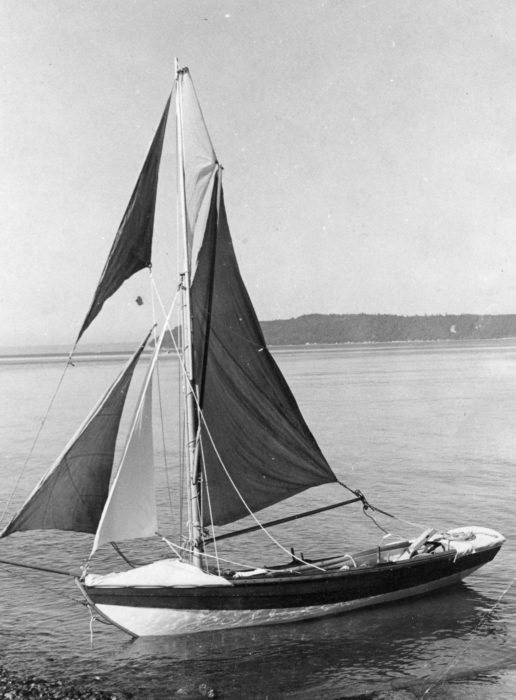 photographs by the author and from his collection
photographs by the author and from his collection
Join The Conversation
We welcome your comments about this article. To include a photo with your remarks, click Choose File below the Comment box.

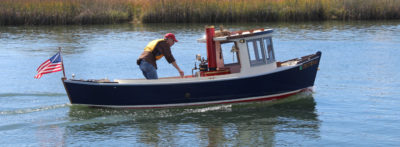


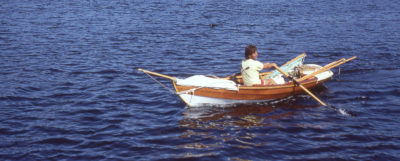
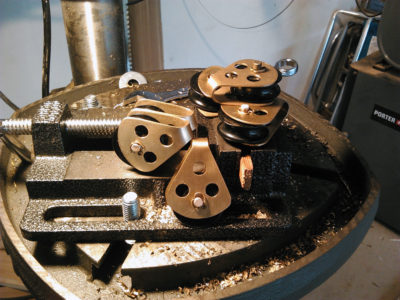

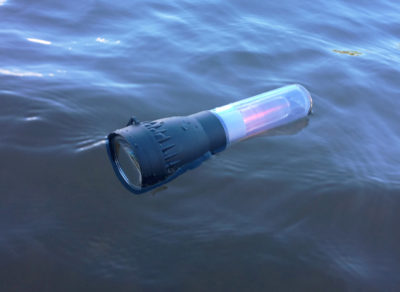

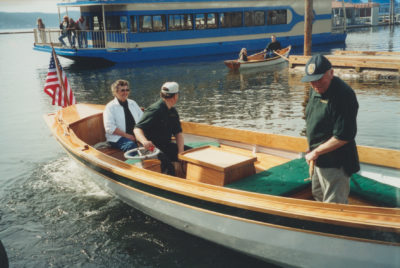
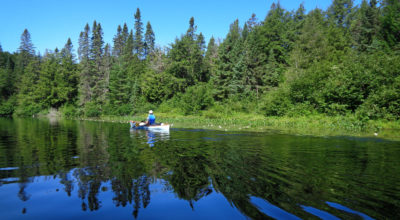
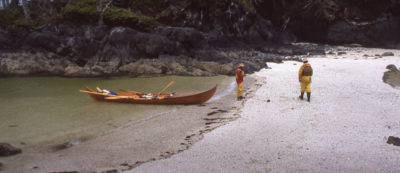
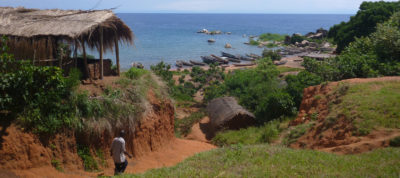
Great adventure! Well done!
Cheers, Robert
A beautifully written piece about a genuine adventure.
Chris,
After reading your ’80s trip in GAMINE up the Northwest Coast, I better understand why you are the editor of Small Boats Monthly. Your boat GAMINE blew me away—a 2-part mast and never-ending sails. You actually took the trip that we all wish we would have taken when we were young but didn’t. Although I have to admit, after the encounter with the orca, my boat would have been full, but not with water. Your deadpan but highly illustrative writing kept me glued and I anxiously await Part 2!
Regards,
Pat
Crazy story, told well. GAMINE was very patient with you 🙂
Cheers
Kent
A grand tale. How did you keep the camera working? Keen to read the next installment.
Peter in Redmond
Thanks, Peter. My camera at the time was a Konica Autoreflex T, a 35mm SLR that I bought used from a classmate at my high school around 1968. It had a built-in exposure meter that was visible in the viewfinder; everything else was manual. I used the same camera for a 4-month canoe trip from Quebec to Florida, a 2 1/2-month row from Pittsburgh to Florida, and finally in 1986 for my 2-month second Inside Passage trip. I kept it in waterproof bags and boxes, usually with some silica gel to absorb moisture. I’d also have a small towel handy to dry my hands before using the camera. The camera put up with a lot of hard use and never required any maintenance.
After my first Inside Passage trip, I bought a radio-controlled shutter release accessory that allowed me to “selfies” from up to 400′ away. That was much better than being limited to the camera’s built-in 10-second timer.
Chris, thanks for the story. Sailing the Inside Passage for your first “overnight cruise” is an ambitious undertaking!
Tom
After completing second half of the Inside Passage in 2017, I can attest to how much has changed on land since your first trip. The totem at Mamillilkula has long since fallen over and has mostly rotted away, the Minstrel Island marina has long since closed and the fishing fleet at Port Hardy is a mere shadow of its former self, among other smaller changes. Notwithstanding all that, the sea is still the sea and it’s still a great trip in a small engineless boat.
I have just finished reading your article and following it on a map of Vancouver Island. My wife and I spent a week each on Cortes and then Quadra Island this summer, so your route was doubly interesting.
How adventurous you were then (and possibly now as well!)
I look foward to the next installment.
Around 1997 or so five of us drove to Prince Rupert, rode the ferry over to Skidegate on Graham Island (Queen Charlottes, aka Haida Gwai) and hired a big Zodiac down to Raspberry Cove (which has no raspberries nor its it a cove), to commence a kayak trip back north to Moresby Camp. We were in one small cove (can’t remember whether we camped there) where we saw the same sunny-side-up jelly fish. What puzzled me was how hundreds of them found their way to that very cove. Suspect it had something to do with procreation, or other kind of recreation.